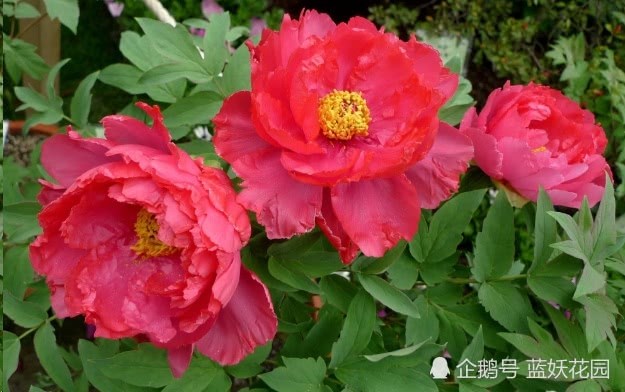These plants cannot grow together.

Brain hands-on
Listen to the sound of the night with you!
Attention
When two plant species are put together, there are often some interesting phenomena: some can live together peacefully, co-exist and prosper, while others are like enemies, either suffering from one side or losing both sides in the end.
Understand the method of mutual growth of plants, do not have to worry about the configuration of courtyard plants, so that the survival rate of plants is very high, and the configuration of courtyard plants is more scientific. The following list of plants against each other, for your reference.
Mutual collocation
Calendula planted with rose can effectively control soil nematodes and make rose thrive.
When grapes are planted with violets, the grapes are more fragrant.
The interplanting of peony and peony can obviously promote the growth of peony and make the peony have luxuriant branches and bright flowers.
peony
Rose
Redwood and maple, elderberry and spruce, walnut and Hawthorn, chestnut and Pinus tabulaeformis can promote each other's growth.
Lily and rose planting or bottle together, can prolong the flowering period.
Lily
Camellia, Camellia, Camellia oleifera and Camellia oleifera put together can significantly reduce mildew.
The combination of Zhu Dinghong and evening incense, camellia and red onion orchid, pomegranate and sunflower, hydrangea and rose, a bunch of red and pea flowers are beneficial to both sides, while pine, poplar and Caragana are good for each other.
If the original flowering period is only one day, if put together with the cypress, the flowering period can be extended to 3 days.
The smell of onions and carrots repels pests from each other.
The mixed cultivation of lotus grass and radish, which can emit chemicals from roots, stems and leaves, can promote the growth of radish.
Clematis paniculata
There are many roots of grasses, which can secrete organic acids to promote the formation of aggregate structure, which can be used by legumes, while the roots of legumes can not only help soil form grain structure, but also produce nitrogen fertilizer to promote the growth of grasses.
Leek can produce a strong smell, can disinfect and sterilize, and is a good friend of many plants, for example, interplanting with cabbage can reduce the root rot of cabbage.
Allicin volatilized from garlic can not only kill bacteria but also drive away pests, so it is suitable for interplanting with cotton, Chinese cabbage and other crops.
Xiangke collocation
Cloves and violets cannot be mixed.
If the clove is planted next to the lily of the valley, it will wither immediately.
The smell of cloves can also endanger the lives of daffodils.
If you keep cloves, violets, tulips and forget-me-not together, you will suffer from each other.
Lilac
Violet
Don't forget me.
Narcissus
Lily of the valley
Cloves, mint and laurel can secrete a large number of aromatic substances, which have an inhibitory effect on the ecology of adjacent plants, and it is best not to put them together with other potted flowers for a long time.
When daffodils and lilies grow together, they will die together.
Planting hydrangea with jasmine, dahlia and rose, daffodils and lilies, roses and cloves will hurt both or one of them.
The secretion of Robinia pseudoacacia can inhibit the growth of nearby flowers and trees.
The leaves and roots of walnut can secrete a substance, which can inhibit the flowers and plants of the genus Rosa such as begonia and many kinds of herbaceous flowers.
Cunninghamia lanceolata should not be planted around peach trees.
Grapes cannot be planted with leaflet elms.
Elm cannot be interplanted with oak and birch.
If ripe apples and bananas are put together with blooming roses, roses and daffodils, the ethylene released by the former will make the potted flowers die early, thus shortening the viewing period.
When all kinds of flowers are planted next to fruit trees, they will wither faster.
Flowers that can secrete aromatic substances, such as peppermint and rose, have a certain inhibitory effect on the ecology of nearby flowers.
When juniper is planted with pears and begonia, the latter will suffer from rust, resulting in falling leaves and fruits.
Roses and mignonette together, the former will crowd out the latter to wither, and mignonette will release a chemical before and after withering, causing the rose to die.
Juniper cypress
Oleander leaves, skins and roots secrete oleoside and juglone, which can harm other flowers.
The root exudates of elderberry inhibit the growth of pine and poplar, which can not only strongly inhibit the growth of pine, but also prevent the pine nuts from sprouting.
Pine trees are antagonistic to ash, spruce, oak and birch, and interplanting will cause pine trees to wither.
Cypress and orange trees are not suitable to grow together.
The volatile oil of juniper, which contains ether and trichlorotetraane, will slow down the respiration of other flowers and plants, stop growing and show poisoning.
Cabbage and mustard will "lose both sides" when planted together.
If you plant castor and mustard together, although the former is much stronger than the latter, the lower leaves of the former will wither and yellow and die gradually.
If tomatoes and cucumbers are allowed to live in the same space, neither of them can grow well, resulting in a reduction in yield.
If cabbage and celery are interplanted, both of them will not grow well and may even die.
Oak tree
Elm tree
If you plant cabbage in a vineyard, the growth of grapes will be inhibited.
If the oak and the elm meet, then the branches of the oak will bend their back to the elm and try to avoid the "bad neighbor".
If you do the above plant configuration, the garden will be more beautiful!
-- END--
Everything is wonderful, there is a praise mall in the flower school.
There are flowers and love, a school of flowers
- Prev

Let you separate species and become an expert in plant conservation.
The brain starts to listen to the sound of the night with you! People who pay attention to plants always pursue plants tirelessly, infatuated, casual and infatuated, as if plants are the extension of their limbs, the inheritance of will, and the maintenance of plants.
- Next

Finally looking forward to the peony blooming, but it doesn't seem quite right that the flowers are small and thin.
24. Finally looking forward to the peony blooming, but it doesn't seem quite right, the flowers are small and thin! This is an excerpt from the original "Peony Culture" column of the blue demon. The blue demon planted an island brocade peony last autumn, but the big safflower blossoms in spring.
Related
- Wuhan Hospital Iron Tree Blooming Result Was Instantly Frightened by the Gardener Master
- Which variety of camellia is the most fragrant and best? Which one do you like best?
- What is the small blue coat, the breeding methods and matters needing attention of the succulent plant
- Dormancy time and maintenance management of succulent plants during dormancy
- Minas succulent how to raise, Minas succulent plant pictures
- What are the varieties of winter succulent plants
- How to raise succulent plants in twelve rolls? let's take a look at some experience of breeding twelve rolls.
- Attention should be paid to water control for succulent plants during dormant period (winter and summer)
- Watering experience of twelve rolls of succulent plants
- Techniques for fertilizing succulent plants. An article will let you know how to fertilize succulent plants.

